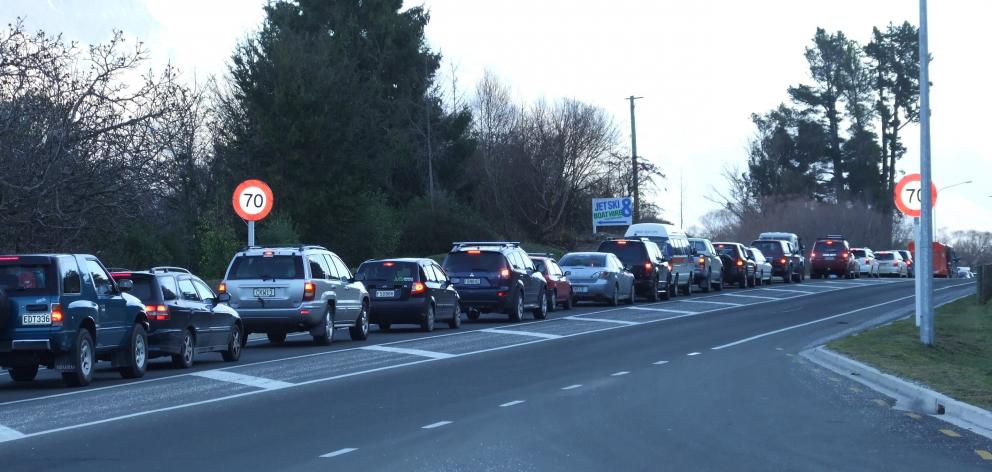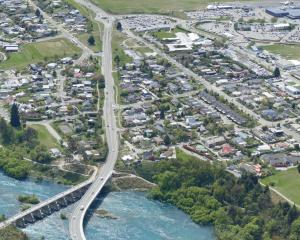
The 14km drive from the outskirts of town to the CBD is forecast to take an hour at peak times within the next three years.
In its submission on the Otago Regional Council’s (ORC) draft regional public transport plan — focused on the next 10 years — the Queenstown Lakes District Council (QLDC) said rapid growth in the district was putting "significant pressure" on the transport network.
And unless people stopped using private vehicles, it would only get worse.
"If significant mode shift away from single-occupancy vehicles is not achieved, much of the transport network will reach gridlock," the QLDC submission said.
"By 2028, it is predicted that peak travel periods on State Highway 6A will be regularly gridlocked at morning and afternoon peak hours with car and public transport travel times between Lake Hayes Estate and Queenstown exceeding 60 minutes.
"This projected gridlock will have a significant negative impact on the economic productivity of the district, liveability for residents, and the visitor experience."
At present, the average daily population was about 70,205 and the peak daily population was 99,220 — by 2053, those figures were expected to more than double, to 150,082 and 217,462, respectively.
Congestion was exacerbated because rapid development was outpacing the Wakatipu network’s capacity, and geographic limitations made expanding the roading network difficult.
"Accordingly, the network must be utilised more efficiently ... If significant mode shift away from single-occupancy vehicles is not achieved, much of the transport network will reach gridlock."
While the ORC, QLDC and Central Otago District Council had partnered to apply to central government for a regional deal, which included a proposal for mass rapid transit, further investment in key public transport routes and destinations in Queenstown was required "due to the finite capacity of the roading network".
In particular, the council said detailed business planning for public transport to service the Te Putahi Ladies Mile development, which envisaged another 2400 residential units, was an "urgent priority" — failure to progress that would have "serious implications", including the delay of the development, the submission said.
While it welcomed aspirations for a potential new ferry service, from Queenstown to Homestead Bay, where another 2800 homes are planned, in "6-30 years", it did not support removing planned improvements to the existing ferry service, operating between Queenstown Bay and Frankton Arm, in the ORC’s proposed draft annual plan.
Government co-funding had been reduced, meaning there was $4.6 million less than needed for planned upgrades across Otago.
Rather than ratepayers bearing the full costs, improvement plans, including the expanded ferry service, had been pared back.
But the district council’s submission said it was a "missed opportunity" to address Queenstown’s congestion challenges in growth locations, such as to and from Jack’s Point/Hanley’s Farm to the Queenstown CBD, and encouraged the ORC to "prioritise moving the planned date of those ferry services forward".
QLDC also expressed support for the Wanaka public transport business case — a recent addition to the ORC’s draft long-term plan.
Over two trials, in 2022 and 2023, more than 1300 rides were recorded, contributing to a reduction of almost 49,000km in light vehicle travel, QLDC said.
The district council said it was "crucial" Upper Clutha public transport services were prioritised, and sought for that to start in year four of the long-term plan.
Regarding a proposal to increase the base fare for adult passengers by 25%, to $2.50, the district council "strongly encourages" ORC to try to retain the $2 fare and noted there was "an opportunity with upcoming increases in parking fees in the Queenstown town centre" to shift more trips to public transport.
It also did not support the introduction of "zones" in Queenstown, meaning passengers who travelled further paid more, and submitted the ORC should consult separately on potential fare increases and zoning.
The ORC will consider adopting the draft plan on June 25, at the earliest.












